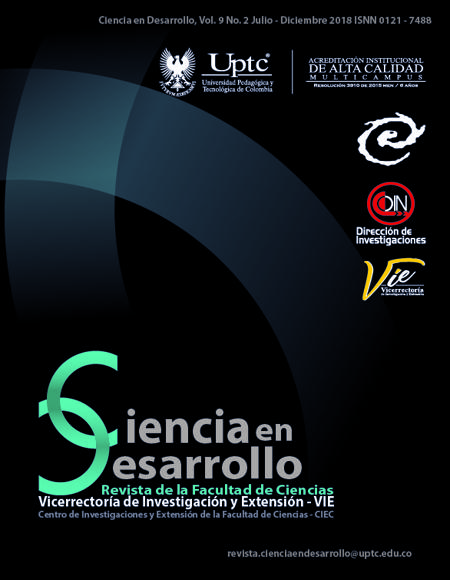Purification of the carbon dioxide emitted by gas treatment plants

Abstract
In natural gas plants, the carbon dioxide (CO2) traveling in the extracted stream is separated and released to the atmosphere. This stream also contains hydrogen sulfide (H2S), water and hydrocarbons. The purpose of this investigation was to design a process to purify this CO2 stream, to its further use in the food industry. There, the CO2 can be employed in carbonated drinks and as supercritical fluid; requiring a purity higher than 99.95 mol%. Therefore, a real flow of 3454 ton/year CO2 was selected as case of study, which is emitted in a gas treatment plant located in Neiva, Colombia. This stream was simulated in ProMax and subjected to chemical absorption with methyl diethanolamine (MDEA), to a dehydration with diethylene glycol combined with molécular sieve, to a Ryan-Holmes cryogenic process for removing light components (methane and ethane) and their combinations. The combination of the three processes allowed us for a 99.95% CO2 recovery and a 99.99 mol% CO2 purity, requiring capital expenses (CAPEX) of USD 412.323 or 53 USD/tCO2. This CO2 could be commercialized at sell prices as high as 5000 USD/tCO2 to the food industry. In addition, the combination of the two first processes delivered a CAPEX of 37 USD/tCO2 with a 99.85 mol% CO2 purity, suitable for other applications requiring less purity in the food industry or improved oil recovery.Keywords
Global warming; CAPEX; Capital expenses; Carbon capture and utilization (CCU); Process simulation
Author Biography
Nancy Gámez
Magíster en Diseño y Gestión de Procesos. Ingeniera de Procesos. Stoc (MASA), Bogotá, Colombia
Martha Cobo
Profesora Asociada
Directora Maestría en Diseño y Gestión de Procesos
Facultad de Ingeniería
Universidad de La Sabana
References
- Comisión de Regulación de Energía y Gas. Resolución No. 071. Reglamento Único de Transporte de Colombia. Sesión No. 324. Especificaciones de calidad del gas natural en el punto de entrada del sistema de transporte [Online], 2007. Disponible en: http://bilateralenergy.com/Reglamento%20Unico%20de%20Transporte%20de%20Gas%20Natural.pdf
- A. Ahmed & M. Gavin, “Industrial Design and Optimization of CO2 Capture, Dehydration, and Compression Facilities”, Gas Processors Association Convention, Bryan Research & Engineering [Online], 2009. Disponible en: https://www.bre.com/PDF/Industrial-Design-and-Optimization-of-CO2-Capture-Dehydration-and-Compression-Facilities.pdf
- Gas Processors Association, Engineering Data Book, 12a ed, Tulsa, Oklahoma, 2004.
- B. Moreno, E.A. Campanella, “Simulation of the Chemical Absorption Process with Amines Solutions for Biogas Purification”, Inf. tecnol. vol. 24, pp 25-32, 2013. doi: 10.4067/S0718-07642013000100004.32. DOI: https://doi.org/10.4067/S0718-07642013000100004
- C. Echeverry, “Estimación de la emisión de gases de efecto invernadero en el municipio de Montería (Córdoba, Colombia)”, Revista Ingenierías Universidad de Medellín vol.5. pp 85-09, julio 2006. Disponible en: http://www.scielo.org.co/pdf/rium/v5n9/v5n9a08.pdf
- H.M. Ribon, N. Santos, O.P. Ortiz, “Métodos de deshidratación de gas natural”, Revista Fuentes: El Reventón Energético vol. 8, pp 55-64, julio 2010.
- E.N. Aguilera, M.E. Sanchez, J.M. Ortiz, “Adsorbentes para la deshidratación de gas húmedo dulce: avances y tendencias”, Tecnología Química vol. 33, pp 47-63, enero 2013. Disponible en: http://revistas.uo.edu.cu/index.php/tq/article/viewFile/844/808
- A.J. Finn, Contain Natural Resources [Online], Processing of Carbon Dioxide Rich Gas. GPA Conference. Manchester, 2014. Disponible en: http://www.costain.com/media/13020/gpa-conference-sept-20141mb.pdf.
- M.J. Martínez, Deshidratación de gas natural [Online], 2011, pp 141-152. Disponible en: https://www.academia.edu/31232586/Deshidratacion_del_gas_natural_marcias_martinez.pdf?auto=download
- L. Addington, C. Ness. An evaluation of General “Rules of thumb” in amine Sweetening Unit design and Operation [Online], Gas Processors Association Convention, Bryan Research and Engineering. Disponible en: http://www.eighbooks.com/lib.php?q=chemical-engineering-7th-edition-solutions-manual#!
- R. Perry Robert, G. Don Green, Maloney J, Manuel del Ingeniero Químico. 7a Ed. McGraw-Hill Education, 2001, 11.4.
- American Association of Cost Engineers [Online], 2015. Disponible en: http://www.aacei.org/.
- N. Berghout, M. van den Broek, A. Faaij, “Techno-economic performance and challenges of applying CO2 capture in the industry”, Int. J. Greenhouse Gas Control vol. 17, pp. 259-279, September 2013. doi: 10.1016/j.ijggc.2013.04.022 DOI: https://doi.org/10.1016/j.ijggc.2013.04.022
- W.D. Seider, J.D. Seader, D.R. Lewin, Product & Process Design Principles: Synthesis, Analysis and Evaluation, 3rd ed., Wiley, New Jersey, 2009.
- World Bank, 2017. Disponible en: http://www.worldbank.org/.
- M. Netušil & P. Ditl, “Natural Gas Dehydration” in Natural Gas - Extraction to End Use, S.B. Gupta, Ed. InTech, Octubre, 2012, pp. 4-22. DOI: https://doi.org/10.5772/45802
- M. Mondal, H. Balsora, P. Varshney, “Progress and trends in CO2 capture/separation technologies”, Energy vol. 46, pp. 431-441, October 2012. doi: 10.1016/j.energy.2012.08.006.441. DOI: https://doi.org/10.1016/j.energy.2012.08.006
- S. Mamun, V.Y. Dindore, H.F. Svendsen, “Kinetics of the reaction of carbon dioxide with aqueous solutions of 2-((2-aminoethyl) amino) ethanol”, Ind. Eng. Chem. Res vol. 46, pp 385–394, December 2007. doi: 10.1021/ie060383v. DOI: https://doi.org/10.1021/ie060383v
- A.A. Olajire, “CO2 capture and separation technologies for end-of-pipe applications – A review”, Energy vol. 35, pp. 2610-2628, June 2010. doi: 10.1016/j.energy.2010.02.030. DOI: https://doi.org/10.1016/j.energy.2010.02.030
- M. Finkenrath, Cost and Performance of Carbon Dioxide Capture from Power Generation, IEA Energy Pap. (2011) 51. doi:10.1002/ceat.201100444. DOI: https://doi.org/10.1002/ceat.201100444
- A. Meisen, X. Shuai, “Research and development issues in CO2 capture”, Energy Convers. Manag. Vol. 38, pp. S37-S42, 1997. Doi: 10.1016/S0196-8904(96)00242-7. DOI: https://doi.org/10.1016/S0196-8904(96)00242-7
Downloads
Download data is not yet available.